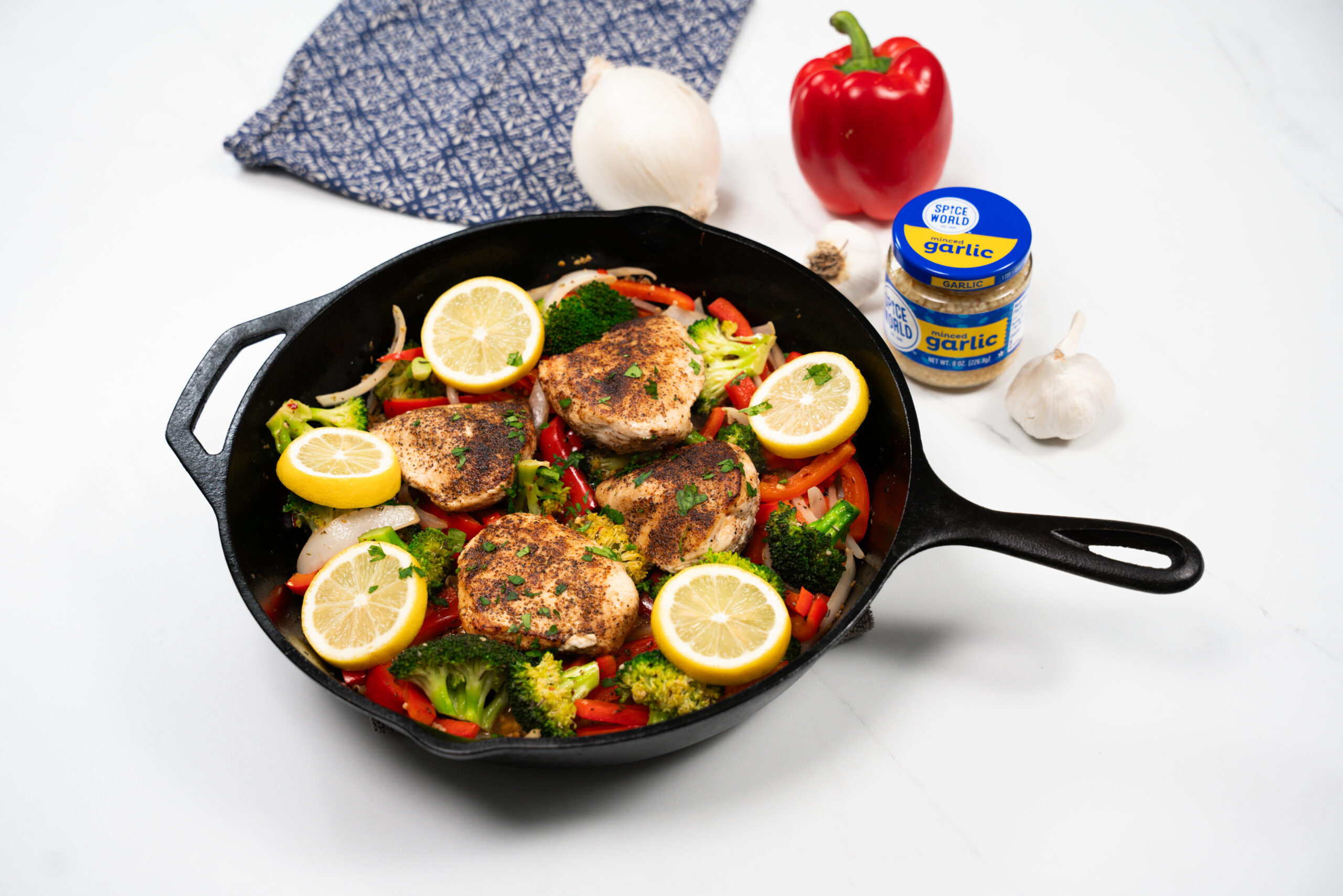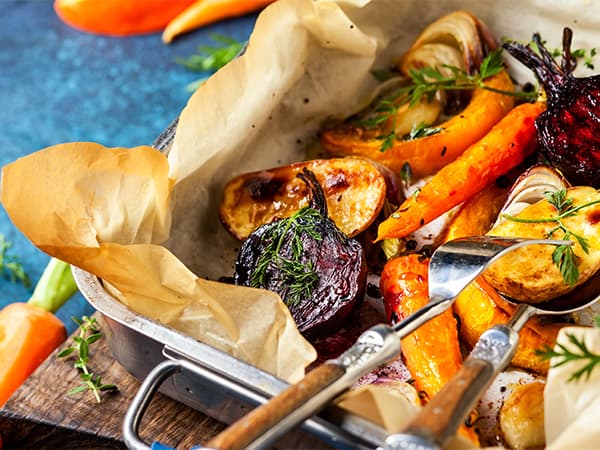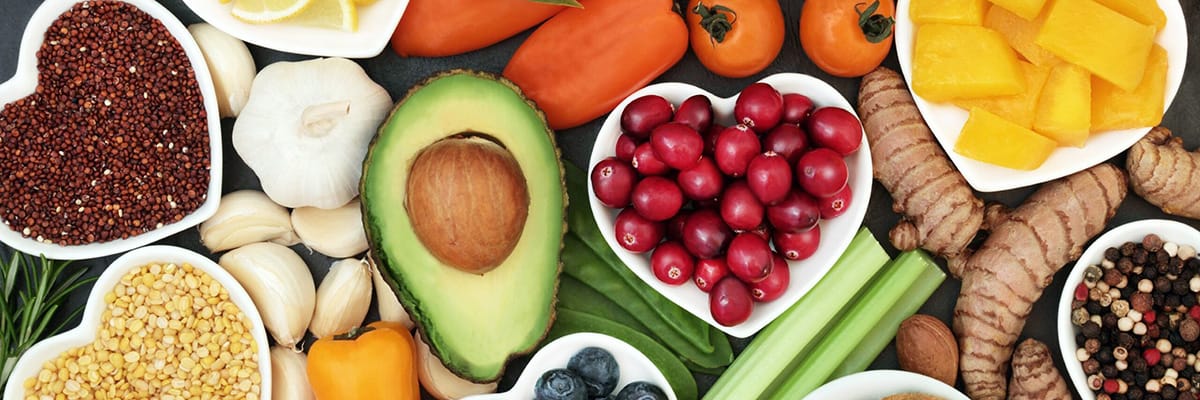Staying Heart-Healthy: Cooking Tips & Supermarket Strategies
Why Heart Health Matters
February is American Heart Month, a tradition that began in 1964 under President Lyndon B. Johnson. Each year, this month focuses on raising awareness about heart health and encouraging preventive measures against heart disease.
Your diet plays a crucial role in cardiovascular health, directly affecting blood pressure and cholesterol levels. A heart-healthy diet emphasizes whole grains, fresh fruits and vegetables, unsaturated fats (like avocados and nuts), and lean proteins while minimizing sodium, saturated fats, and trans fats.
Supermarket Strategies for Heart-Healthy Shopping

How to Read Labels Effectively
Reading nutrition labels is essential to making informed, heart-smart choices. Keep these tips in mind:
- Look for certifications such as “low sodium” or “organic.”
- Check the % Daily Value (%DV):
- 5% DV or less per serving is low.
- 20% DV or more per serving is high.
- Opt for foods high in dietary fiber, vitamin D, calcium, iron, and potassium.
- Choose items low in saturated fat, sodium, and added sugars.
For further guidance, visit the FDA’s Nutrition Facts Label guide.
Building A Heart-Healthy Pantry
Stock your pantry with nutritious, versatile ingredients like superfoods instead of over-processed to make heart-healthy cooking easier:
- Superfoods: Avocados, walnuts, chia seeds, berries, salmon, kale, spinach, garlic, onions, and ginger.
- Fresh or Frozen Over-Processed:
- Frozen fruits and vegetables are often flash-frozen without added sugar or salt.
- If using canned beans, rinse and drain to reduce sodium.
- Staples: Garlic, onions, ginger, quinoa, brown rice, oatmeal, whole wheat flour, and whole-grain cereals or crackers.
Heart-Healthy Cooking Tips

Use Healthier Cooking Methods
Choose techniques like steaming, grilling, or roasting over frying. Craving crispiness? Use an air fryer for a low-fat alternative.
Choose Lean Proteins and Healthy Fats
Incorporate proteins like chicken, turkey, fish, lean beef, and plant-based options such as tofu and beans. Add healthy fats like olive oil, avocados, and omega-3-rich fish (salmon, tuna) to your meals.
What Oils Should I Use?
Opt for olive oil or extra virgin olive oil for their versatility and heart-health benefits. Learn more in this Guide to Healthy Cooking Oils from Piedmont Health.
Minimize Salt Without Losing Flavor
Enhance dishes with garlic, onions, ginger, and fresh herbs like thyme, basil, or oregano. Use salt-free seasoning blends and a squeeze of fresh lemon juice for added zest.
Heart-Healthy Recipes with Garlic, Onions, and Ginger
These nutrient-rich ingredients provide bold flavors while offering anti-inflammatory and antioxidant properties that may lower blood pressure and cholesterol. Spice World’s organic products make it easy to incorporate them into your meals.

One-Pan Garlic Chicken and Veggies
This easy one-pan recipe combines lean protein with vibrant vegetables for a balanced, heart-healthy meal.
Garlic infuses the dish with bold flavor while the vegetables provide essential nutrients and antioxidants. It’s perfect for busy weeknights when you want something nutritious and quick.
- Why it’s heart-healthy: The chicken is a lean protein, and the vegetables like broccoli and bell peppers are high in fiber and vitamins.
- The use of olive oil and fresh garlic further supports heart health by reducing inflammation and improving cholesterol levels.
- Serving suggestion: Pair this dish with a side of quinoa or brown rice for added whole grains.

Asian Vegetable Beef Soup
This hearty soup is packed with lean beef, nutrient-dense vegetables, and the warming flavors of garlic and ginger. The recipe calls for reduced-sodium soy sauce and beef broth, making it a heart-friendly option that’s still rich in flavor. With a mix of mushrooms, carrots, and bok choy, every bite is as nourishing as it is satisfying.
- Why it’s heart-healthy: Lean beef provides essential protein, while the fresh vegetables are rich in fiber and antioxidants. Ginger and garlic enhance circulation and support healthy blood pressure.
- Serving suggestion: Serve the soup over a small portion of brown rice to create a complete meal featuring lean protein, whole grains, and antioxidant-rich vegetables.

Roasted Root Vegetables
This simple and versatile recipe uses a medley of root vegetables roasted with olive oil, honey, and minced ginger. The natural sweetness of the vegetables is elevated by the warmth of ginger, creating a dish that’s both satisfying and nutrient-dense. It’s an excellent side dish for any lean protein or can stand alone as a light vegetarian option.
- Why it’s heart-healthy: Root vegetables like carrots, sweet potatoes, and parsnips are high in fiber and antioxidants. The olive oil provides healthy fats, and the ginger adds anti-inflammatory benefits.
- Serving suggestion: Pair these roasted veggies with grilled salmon or chicken for a heart-smart, complete meal.
Wrapping Up: Simple Steps for Heart Health

To maintain heart health:
- Eat a balanced diet.
- Stay active and maintain a healthy weight.
- Quit smoking and limit alcohol consumption.
- Control cholesterol, blood sugar, and blood pressure.
- Manage stress and get sufficient sleep.
By making small, consistent changes to your diet and lifestyle, you can significantly improve your heart health. Explore Spice World’s recipes and USDA-certified organic products for more inspiration.
FAQs
What are the best heart-healthy snacks?
Opt for nuts, seeds, fresh fruits, or whole-grain crackers paired with hummus or avocado spread.
Can I eat dairy on a heart-healthy diet?
Yes, choose low-fat or fat-free dairy options such as milk, yogurt, and cheese to reduce saturated fat intake.
Are all oils unhealthy for the heart?
No, oils like olive oil, avocado oil, and canola oil are heart-healthy choices due to their unsaturated fat content.

